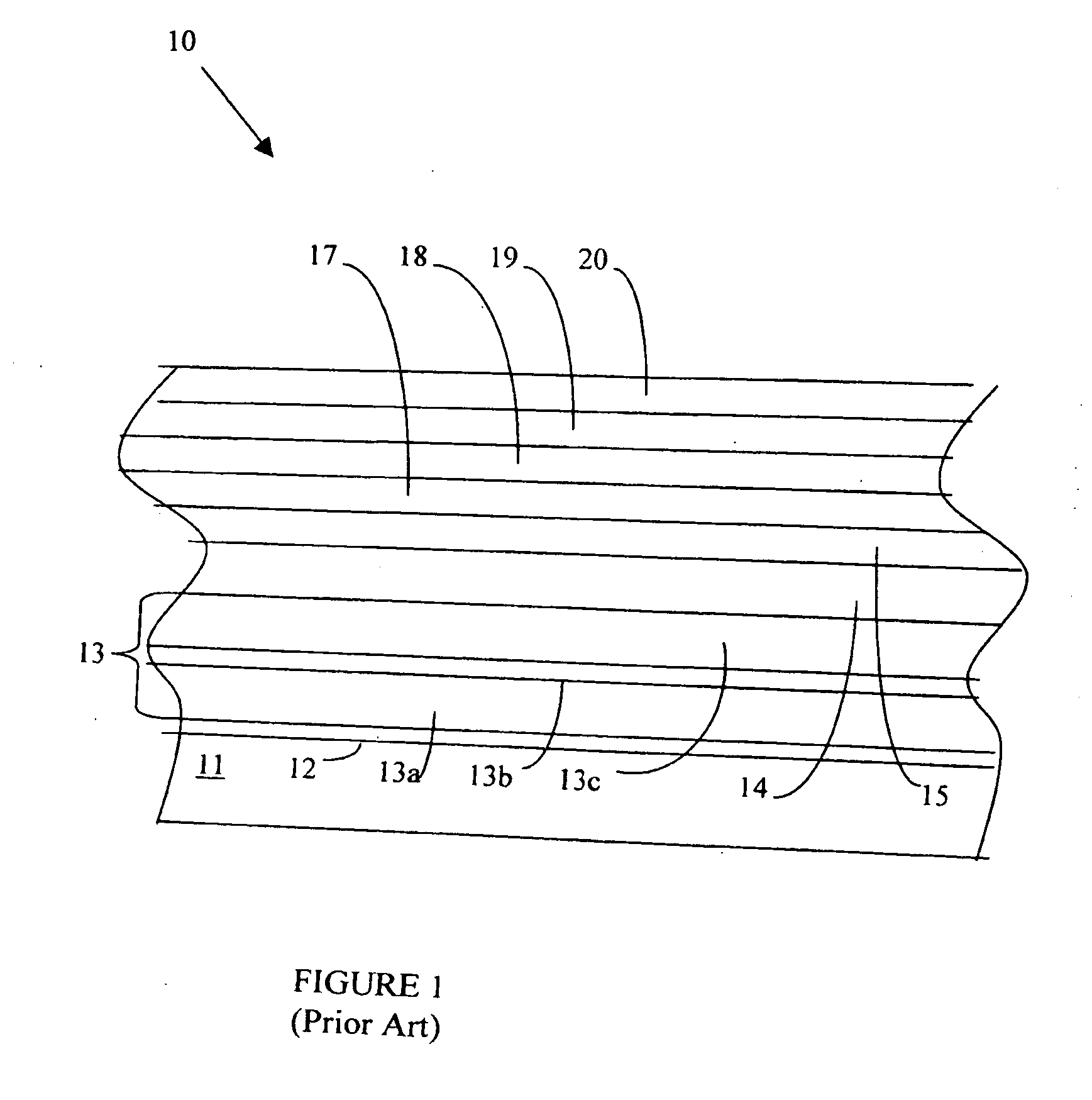Perpendicular magnetic recording medium with improved magnetic anisotropy field
a technology of magnetic anisotropy and recording media, applied in the field of perpendicular magnetic recording media, can solve the problems of short supply and high cost of ru, and achieve the effects of excellent crystallographic c axis orientation, high hc, and high h
- Summary
- Abstract
- Description
- Claims
- Application Information
AI Technical Summary
Benefits of technology
Problems solved by technology
Method used
Image
Examples
Embodiment Construction
[0031]Referring to FIG. 2, a magnetic recording medium 100 comprises a substrate 102, an adhesion layer 104, a SUL 106, a seed layer 108, a non-magnetic layer 110, a HCP non-magnetic layer 112, a bottom magnetic recording layer 114, a capping magnetic recording layer 116 and a protective carbon overcoat 118. A thin lubricant layer such as perfluoropolyether (not shown) can be applied to the top surface of overcoat 118. Although FIG. 2 only shows the various layers on one side of substrate 102, typically, these layers are formed on both sides of substrate 102.
[0032]Substrate 102 can be glass, glass ceramic, a NiP-plated aluminum alloy substrate (e.g. an AlMg substrate), or other appropriate material. Substrate 102 can be either textured or non-textured.
[0033]Adhesion layer 104 can be Cr, CrTi, Ti, or other material. In one embodiment, layer 104 is 5 nm thick Ti, although other thicknesses can be used. Alternatively, adhesion layer 104 can be omitted.
[0034]SUL 106 can comprise Co-base...
PUM
| Property | Measurement | Unit |
|---|---|---|
| thicknesses | aaaaa | aaaaa |
| thick | aaaaa | aaaaa |
| thick | aaaaa | aaaaa |
Abstract
Description
Claims
Application Information
 Login to View More
Login to View More - R&D
- Intellectual Property
- Life Sciences
- Materials
- Tech Scout
- Unparalleled Data Quality
- Higher Quality Content
- 60% Fewer Hallucinations
Browse by: Latest US Patents, China's latest patents, Technical Efficacy Thesaurus, Application Domain, Technology Topic, Popular Technical Reports.
© 2025 PatSnap. All rights reserved.Legal|Privacy policy|Modern Slavery Act Transparency Statement|Sitemap|About US| Contact US: help@patsnap.com



